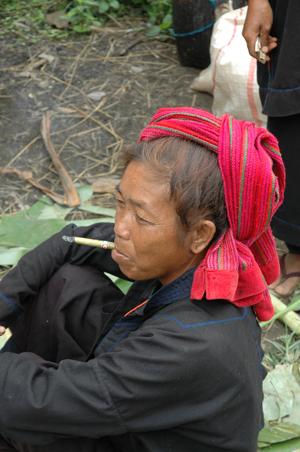FACTS & FIGURES
ADMINISTRATIVE DIVISIONS
7 regions (taing-myar, singular - taing) and 7 states (pyi ne-myar, singular - pyi ne)
- Regions: Ayeyarwady, Bago, Magway, Mandalay, Sagaing, Taninthayi, Yangon
- States: Chin, Kachin, Kayah, Kayin, Mon, Rakhine (Arakan), Shan
- Union territory: Nay Pyi Taw
LANGUAGES
Burmese (official); ethnic groups have their own languages.
RELIGIONS
Buddhist 89%, Christian 4% (Baptist 3%, Roman Catholic 1%), Muslim 4%, Animist 1%, other 2%
POPULATION
55,167,330 (July 2013 est.)
REFUGEES AND INTERNALLY DISPLACED PERSONS (IDP)
- IDPs: more than 454,200 (government offensives against armed ethnic minority groups near its borders with China and Thailand) (2012)
- Stateless persons: 808,075 (2012). Note - Burma's main group of stateless people is the Rohingya, Muslims living in northern Rakhine State. The Burmese Government does not recognise the Rohingya as a "national race" and stripped them of their citizenship under the 1982 Citizenship law, categorising them as "non-national" or "foreign residents"; native-born but non-indigenous people, such as Indians. Children born in Thailand to Burmese parents are also stateless - the Burmese Government does not grant citizenship to children born outside of the country to Burmese parents who left the country illegally or fled persecution
AGE SPREAD
0-14 years: 26.7%
15-24 years: 18.6%
25-54 years: 42.8%
55-64 years: 6.7%
65 years and over: 5.2%
POPULATION GROWTH RATE
1.05% (2013 est.). World ranking:110
BIRTH RATE
18.89 births/1,000 population (2013 est.). World ranking: 97
DEATH RATE
8.05 deaths/1,000 population (2013 est.). World ranking: 97
HEALTH EXPENDITURE
2% of GDP (2011). World ranking: 189
ACCESS TO DOCTORS
0.501 physicians/1,000 population (2010)
MAJOR INFECTIOUS DISEASES
- Degree of risk: Very high
- Food or waterborne diseases: Bacterial and Protozoal Diarrhea, Hepatitis A, and Typhoid Fever
- Vectorborne diseases: Dengue fever, Malaria, and Japanese Encephalitis
- Water contact disease: Leptospirosis
- Animal contact disease: Rabies
HIV/AIDS
- Adult prevalence rate: 0.6% (2009 est.); country comparison to the world: 64
- People living with HIV/AIDS: 240,000 (2009 est.); country comparison to the world: 24
- HIV/AIDS deaths: 18,000 (2009 est.); country comparison to the world: 17
MAJOR URBAN AREAS
Rangoon/ Yangon (capital) 4.259 million; Mandalay 1.009 million; Nay Pyi Taw 992,000 (2009)
EDUCATION EXPENDITURE
0.8% of GDP (2011). World ranking: 172
LITERACY
Total population: 92.7%
TRANSPARENCY
World ranking: 157 (Transparency International, 2013)
FREEDOM
Not Free (Freedom House, 2013)
ECONOMY
Burma is a resource-rich country which suffers from inefficient economic policies, corruption, and rural poverty. Burma is the poorest country in Southeast Asia: approximately 32% of the population lives in poverty. Corruption is prevalent and significant resources, such as in the extractive industries, are concentrated the hands of a few.
The Burmese government has initiated notable economic reforms:
- In October 2011, 11 private banks were allowed to trade foreign currency.
- On 2 April 2 2012, Burma's multiple exchange rates were abolished and the Central Bank of Myanmar established a managed float of the Burmese kyat.
- In November 2012 President Thein Sein signed a new Foreign Investment Law.
The exploitation of natural resources does not benefit the population at large. The most productive sectors will continue to be in extractive industries - especially oil and gas, mining, and timber - with the latter two causing significant environmental degradation. Other areas, such as manufacturing, tourism, and services, struggle in the face of poor infrastructure, unpredictable trade policies, undeveloped human resources (the result of neglected health and education systems), endemic corruption and inadequate access to capital for investment.
- Agriculture: Rice, pulses, beans, sesame, groundnuts, sugarcane; fish and fish products; hardwood.
- Industries: Agricultural processing; wood and wood products; copper, tin, tungsten, iron; cement, construction materials; pharmaceuticals; fertiliser; oil and natural gas; garments, jade and gems.
Information contained on this page was retrived from The World Factbook in March 2014.










